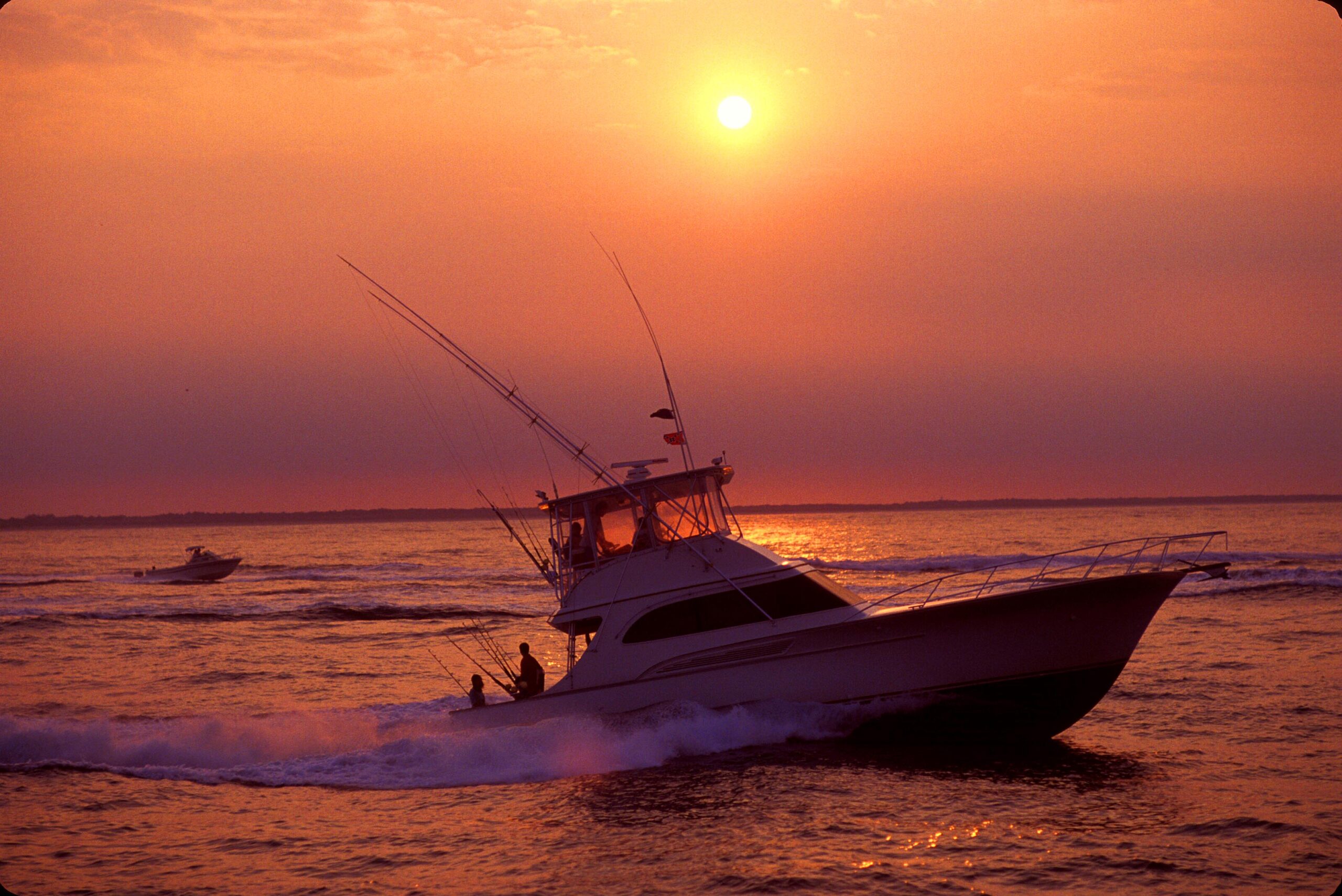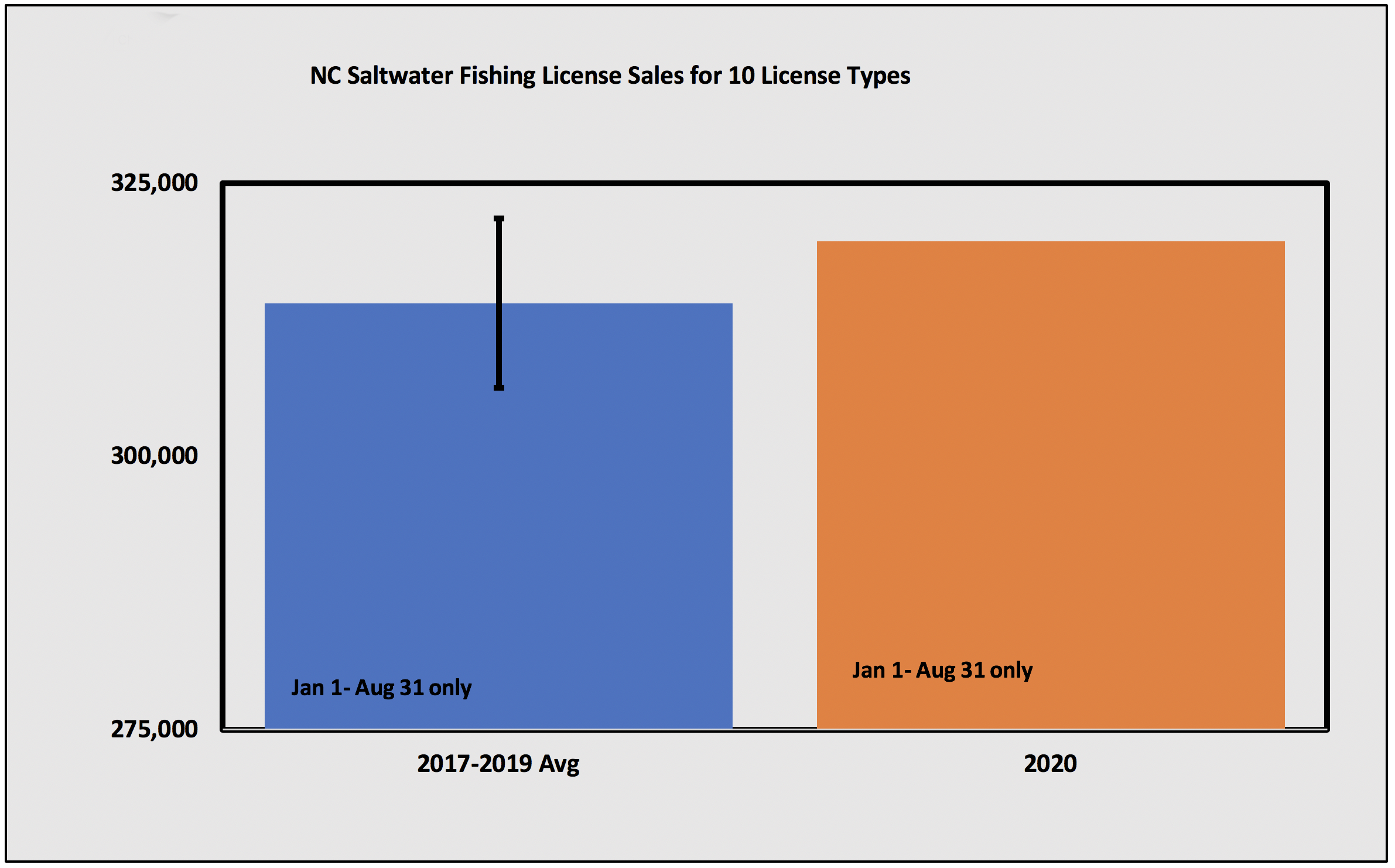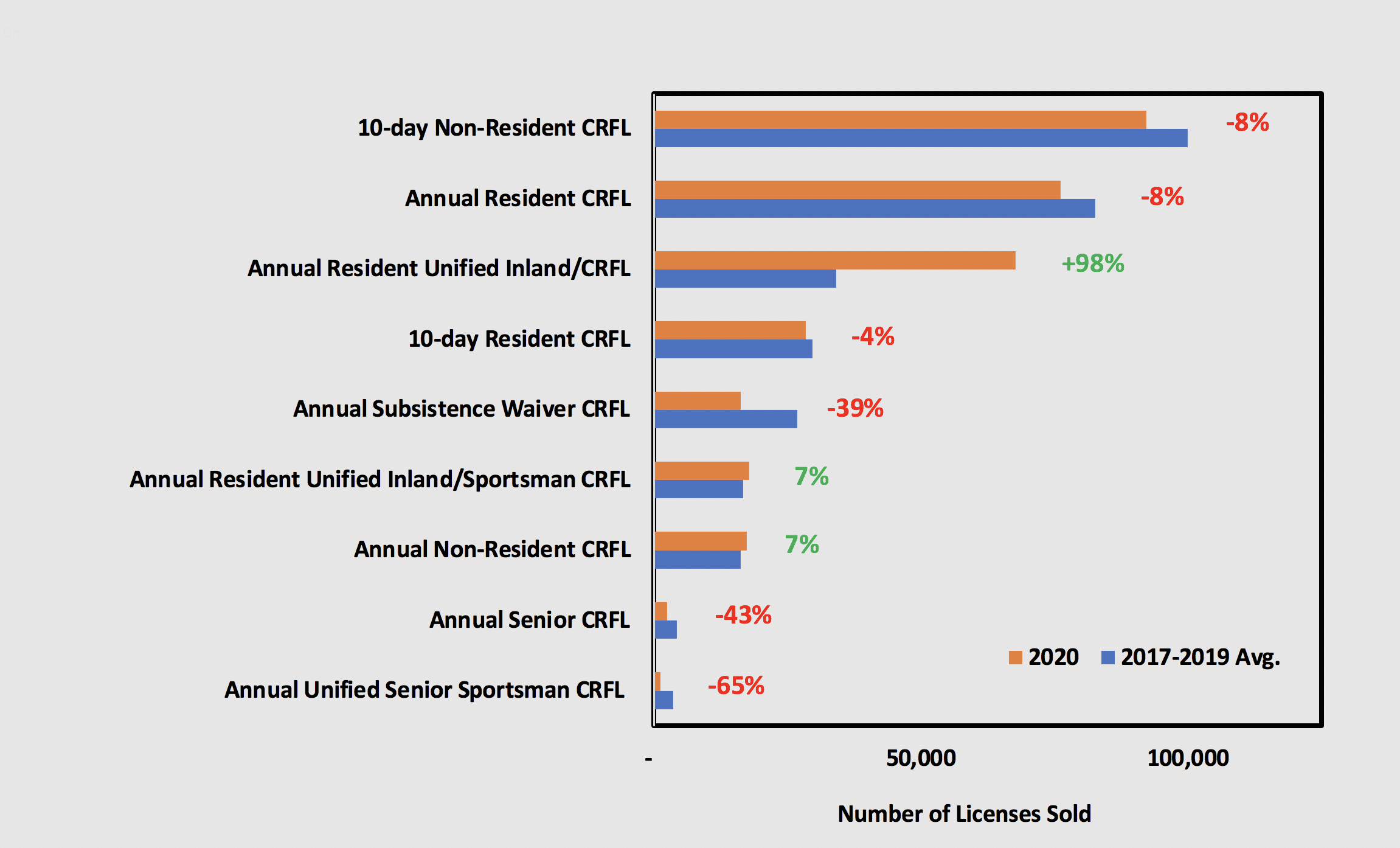Are Fewer People Getting NC Saltwater Fishing Licenses During the COVID-19 Pandemic?

Year-to-date totals are typical, but the changes in sales by type of license are anything but.
Research Need
My friends, family and colleagues who live up and down the North Carolina coast have all commented in some way or another about the throngs of people on the coast this spring, summer and fall. This should not be surprising, considering that people abandoned most far-flung summer travel plans because of the global COVID-19 pandemic. People are simply spending their leisure time closer to home.
In theory, that could mean mean more beachgoers and perhaps more fishers. If you are an angler, maybe you have witnessed more people than typical on the water so far this year.
But why should we care what’s happening with license sales? Well, Coastal Recreational Fishing License (CRFL) sales improve the ability of our state natural resource agencies to manage our fisheries, and some of the fees go towards projects and new initiatives to support fishing. CRFL sales translate into less revenue.
It will take a few months to determine if anglers fished more often than usual, but for now, we can look at license sales as North Carolina Wildlife Resources Commission (NCWRC) tabulates them monthly. The NCWRC is the agency responsible for the administration of all freshwater and saltwater fishing licenses in the state.

What information is available?
To determine whether more people are planning to saltwater fish more than typical, I looked at publicly available data from NCWRC. I only examined the 10 categories of annual and 10-day fishing licenses that involved a saltwater component (CRFL). I excluded all types of lifetime CRFL licenses, because the factors impacting these purchases are more nuanced.
For each license category, I computed the sales for the period January 1 to August 31 for 2017, 2018, 2019 and compared that to the same period for 2020. This would reveal whether the 2020 sales data was lower or higher than the previous 3-year average, and if so, in which categories.
What do the numbers tell us?
From January through August this year, people have purchased 319,661 CRFL, which is a 2% increase compared to the 2017-2019 average (314,024) during the same months. There is typically some fluctuation in sales from year to year, and the chart above shows that the 2020 totals are within the range of the previous three-year average.
But since we can all agree that 2020 has not been a typical year, I wanted to dive a little deeper to look at the changes in sales by license type to see if some licenses performed better than others.

Immediately, we see some departures from normal that COVID-19 may have caused, at least in part.
There is a lot to interpret in this figure, but if we look at the data through the lens of COVID-19 as a contributing factor to sales, some potential trends become apparent.
First, sales of non-resident 10-day licenses (the largest CRFL category by number) are down 8%, which is likely reflective of the reduced travel during the pandemic. Out-of-state anglers come from far and wide to cast a line in NC.
However, Annual Resident CRFL are also down. Perhaps some residents planning on just saltwater fishing instead opted to purchase Annual Resident Unified Inland/CRFL (+98%) which allows fishing in BOTH fresh and salt water?
We also know that COVID-19 has adversely impacted seniors in 2020, and it seems logical that COVID-19 also may be limiting seniors’ ability to get out and fish. Of all CRFL types, sales of the Annual Senior CRFL (-43%) and Annual Unified Senior Sportsman CRFL (-65%) have declined the most. Incidentally, these two CRFL have the lowest sales volumes of any licenses that allow saltwater fishing.
Last, and perhaps most importantly, the number of Annual Subsistence Waiver CRFL has declined greatly in 2020 (-39%). The Department of Social Services issues this license upon request to any individual who receives benefits from Medicaid, Food Stamps, or Work First Family Assistance. If COVID-19 was partly responsible for this decline, then it could be due to less demand overall (fewer people wanting or able to fish) or due to decreased access to the waiver-granting agency during the pandemic. Either way, this decline is troubling.
What about actual fishing effort?
It’s too early to tell whether CRFL sales reflect actual observed changes in fishing effort and catch. Those estimates are gathered in waves of data collection throughout the year and take months to process and interpret. The North Carolina Division of Marine Fisheries will be able to tell if fishing effort has actually increased or decreased in 2020 compared to previous years sometime by the spring or summer of 2021.
Anything else?
According to staff at the NCWRC, pleasure boat registrations are on pace to achieve the highest annual total in 5 years. I know that I have seen a lot of boats on the water near me this year!
Reading
View Coastal Recreational Fishing License (CRFL) monthly sales reports.
Summary compiled by Scott Baker
Lead photo by Bill Russ/VisitNC.com
The text from Hook, Line & Science is available to reprint and republish at no cost with this attribution: Hook, Line & Science, courtesy of Scott Baker and Sara Mirabilio, North Carolina Sea Grant.



